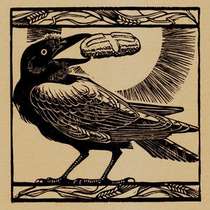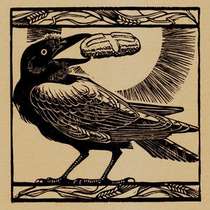 PHOTO: Mary van Balen No need to remember past events, no need to think about what was done before.
PHOTO: Mary van Balen No need to remember past events, no need to think about what was done before.
Look, I am doing something new, now it emerges; can you not see it? Yes, I am making a road in the desert and rivers in wastelands. Isaiah 43,18-19
As the representatives of 80% of American Roman Catholic sisters met in St. Louis, one would do well to remember this passage from Isaiah. Sister Pat Ferrell did as she addressed the opening assembly: “We are united in the desire to surrender that which no longer serves so that something new can be born in and through us.”
Actually, this statement is just the response needed to George Weigel’s article in First Things, The Sisters: Two Views Pitting the two major organization of Catholic sisters in the United States against one another, he questions the vitality and relevance of the more liberal orders, siting their new vocation numbers as evidence. (An article published in the Aug. 13 issue of America Magazine challenges this position.)
What Mr. Weigel does not include in his article is the movement of lay associates that is growing across the country. Lay associates, men and women, married and single, make commitments to existing religious orders and promise to carry out the work and charism of that order. (Associates of The Dominican Sisters of Peace are an example.) During times of change and uncertainty, some people move toward what is familiar, what resounds with reminders of a past that looks safe and desirable from the present vantage point. Others are moved to create something new, rooted in rich soil of the past, but responding to new climates, new questions, new challenges.
To pit one group against the other is not productive. Neither is judging one group by its “success” in duplicating the past. Many religious orders represented by LCRW are experiencing growth in new forms, forms Mr. Weigel did not mention in his article.
The Associate movement is one such form. Monastic communities have long had oblates, (See Benedictine Oblates for an example.)lay people who connect themselves with a particular monastery, assuming a life of prayer and service in keeping with their position and training as well as with the rule of the monastery.
The future of the Catholic Church does not lie in the numbers of vowed religious, no matter how liberal or conservative. The future of the Church relies on the Holy Spirit, and the lives of those faithful who work with the Divine Presence and participate in the continuing transformation of the world. In the RCC, the work of Jesus does not rely primarily on ordained or vowed members of the, but on the vitality of faith and work of lay people as well.
As Sr. Pat Farrell suggested in her remarks, God is busy making something new. One cannot judge the efficacy or vitality of religious orders by how many young women become vowed sisters, but by how the communities, including lay members who are an integral part of them, reach out and continue the work of Jesus, transforming the world as their gifts and talents allow. Prayer, worship, and service, enthusiasm for them all, abound in Associate as well as vowed members.
Today’s world offers new challenges and new opportunities. The Church as a whole would do well to look to the orders of women religious that have responded to the great thirst for prayer and spirituality in the world by opening their hearts and doors in new ways to those called to deep prayer and community connection but also to live their lives as lay women and men in the world.
I hope Seattle Archbishop J. Peter Sartain and the rest of the hierarchy are listening.

 St. Mark’s Episcopal Cathedral Sunday I attended Mass with Kathryn at the Episcopal Catherdral in Seattle, Saint Marks. The large church building was on its way to becoming a full-fledged gothic cathedral when the depression hit. Years later, the decision was made to leave it as it was and use the millions of dollars completion would have cost for other, more worthy causes. As a result, the church is an interesting mix: Large windows that were to be stained glass, but that are filled with rectangular leaded panes of glass; the rafters can be seen high above where the ceiling would have been; only a few columns have been surrounded with finishing stone. Behind the altar has been ornamented with one of the few additions…a modern glass scultpure filling the space just in front of the plain glassed rose window.
St. Mark’s Episcopal Cathedral Sunday I attended Mass with Kathryn at the Episcopal Catherdral in Seattle, Saint Marks. The large church building was on its way to becoming a full-fledged gothic cathedral when the depression hit. Years later, the decision was made to leave it as it was and use the millions of dollars completion would have cost for other, more worthy causes. As a result, the church is an interesting mix: Large windows that were to be stained glass, but that are filled with rectangular leaded panes of glass; the rafters can be seen high above where the ceiling would have been; only a few columns have been surrounded with finishing stone. Behind the altar has been ornamented with one of the few additions…a modern glass scultpure filling the space just in front of the plain glassed rose window. PHOTO:Mary van Balen After a longish day of travel that took me to Seattle via Tennesee, I met my friend Kathryn and her husband Gary for my first experience of Washington state. First impression? Cool, almost cold! Wonderful relief coming from parched midwest. Gary parked the car and we took a walk along Puget Sound until arriving at one of their favorite little seafood diners. All types of seafood was breaded and fried by the owner, an older man who had been running the Sun Fish for quite a few years. Kathryn and Gary had salmon. I tried scallops. Not greasy. Delicious.
PHOTO:Mary van Balen After a longish day of travel that took me to Seattle via Tennesee, I met my friend Kathryn and her husband Gary for my first experience of Washington state. First impression? Cool, almost cold! Wonderful relief coming from parched midwest. Gary parked the car and we took a walk along Puget Sound until arriving at one of their favorite little seafood diners. All types of seafood was breaded and fried by the owner, an older man who had been running the Sun Fish for quite a few years. Kathryn and Gary had salmon. I tried scallops. Not greasy. Delicious.  The day had been long. Work. Haircut. Doctor’s appointment. Late dinner with friends. I had met them at a restaurant I had not been to before and had difficulty finding a parking place downtown. When I returned to my car I found a ticket on the windshield: The spot was in a residential permit area. Sigh. I’m not used to thinking about residential permit areas. Mom’s words came to me: “In a year you’ll never know where that money went. Don’t worry.” Thanks, mom. Worrier extraorinaire over some things, she was right about this one.
The day had been long. Work. Haircut. Doctor’s appointment. Late dinner with friends. I had met them at a restaurant I had not been to before and had difficulty finding a parking place downtown. When I returned to my car I found a ticket on the windshield: The spot was in a residential permit area. Sigh. I’m not used to thinking about residential permit areas. Mom’s words came to me: “In a year you’ll never know where that money went. Don’t worry.” Thanks, mom. Worrier extraorinaire over some things, she was right about this one.  PHOTO:Mary van Balen “There was the work hard, play hard Eden of childhood truths and treats. Run out in the rain, my Czech grandmother would say urgently, run quick! I flew out the back door, naked, screeching with demented joy, to stand under the drainpipe, rainwater sluicing down my tadpole body.”
PHOTO:Mary van Balen “There was the work hard, play hard Eden of childhood truths and treats. Run out in the rain, my Czech grandmother would say urgently, run quick! I flew out the back door, naked, screeching with demented joy, to stand under the drainpipe, rainwater sluicing down my tadpole body.” PHOTO: Mary van Balen – In scholars study lounge, Collegeville Institute “I have a prayer request for you,” my sister said. “A young man, twenty-six, discovered that he has stage four lung cancer.” Never a smoker. The prognosis is unknown, but it does not appear likely that he has long to live.
PHOTO: Mary van Balen – In scholars study lounge, Collegeville Institute “I have a prayer request for you,” my sister said. “A young man, twenty-six, discovered that he has stage four lung cancer.” Never a smoker. The prognosis is unknown, but it does not appear likely that he has long to live. PHOTO: Mary van Balen “You’re a natural contemplative,” a priest/friend once told me in high school. A few months before, I wouldn’t have known what he meant. Raised Catholic and having attending Catholic schools from the start, one might have imagined I would have already learned about the rich tradition of contemplative prayer in the the Church. No. Perhaps at that time, such knowledge was deemed unsuitable for the person in the pew. Or perhaps the diocesan clergy were not practicing contemplatives themselves: You can’t give what you don’t have.
PHOTO: Mary van Balen “You’re a natural contemplative,” a priest/friend once told me in high school. A few months before, I wouldn’t have known what he meant. Raised Catholic and having attending Catholic schools from the start, one might have imagined I would have already learned about the rich tradition of contemplative prayer in the the Church. No. Perhaps at that time, such knowledge was deemed unsuitable for the person in the pew. Or perhaps the diocesan clergy were not practicing contemplatives themselves: You can’t give what you don’t have. PHOTO: Mary van Balen Instructions for living a life:
PHOTO: Mary van Balen Instructions for living a life:
 “Saint Benedict” by Br. David Paul Lange OSB – Photo: Mary van Balen Readers of this blog know I have found grace and renewal at Saint John’s Abbey in Collegeville, MN, Saint Benedict’s Monastery in St. Joseph, MN, and the Collegeville Institute for Ecumenical & Cultural Research. The three are closely related not only geographically but most importantly by their roots in Benedictine spirituality, and in the case ofthe monastery and abbey, the Rule of St. Benedict.
“Saint Benedict” by Br. David Paul Lange OSB – Photo: Mary van Balen Readers of this blog know I have found grace and renewal at Saint John’s Abbey in Collegeville, MN, Saint Benedict’s Monastery in St. Joseph, MN, and the Collegeville Institute for Ecumenical & Cultural Research. The three are closely related not only geographically but most importantly by their roots in Benedictine spirituality, and in the case ofthe monastery and abbey, the Rule of St. Benedict. God is Present as always. We may not need rescued from a poisoned loaf, but we can all use support and nurture as we make our way through life. As Thomas Worcester reminds us, we are expected to offer the same support to others.
God is Present as always. We may not need rescued from a poisoned loaf, but we can all use support and nurture as we make our way through life. As Thomas Worcester reminds us, we are expected to offer the same support to others.